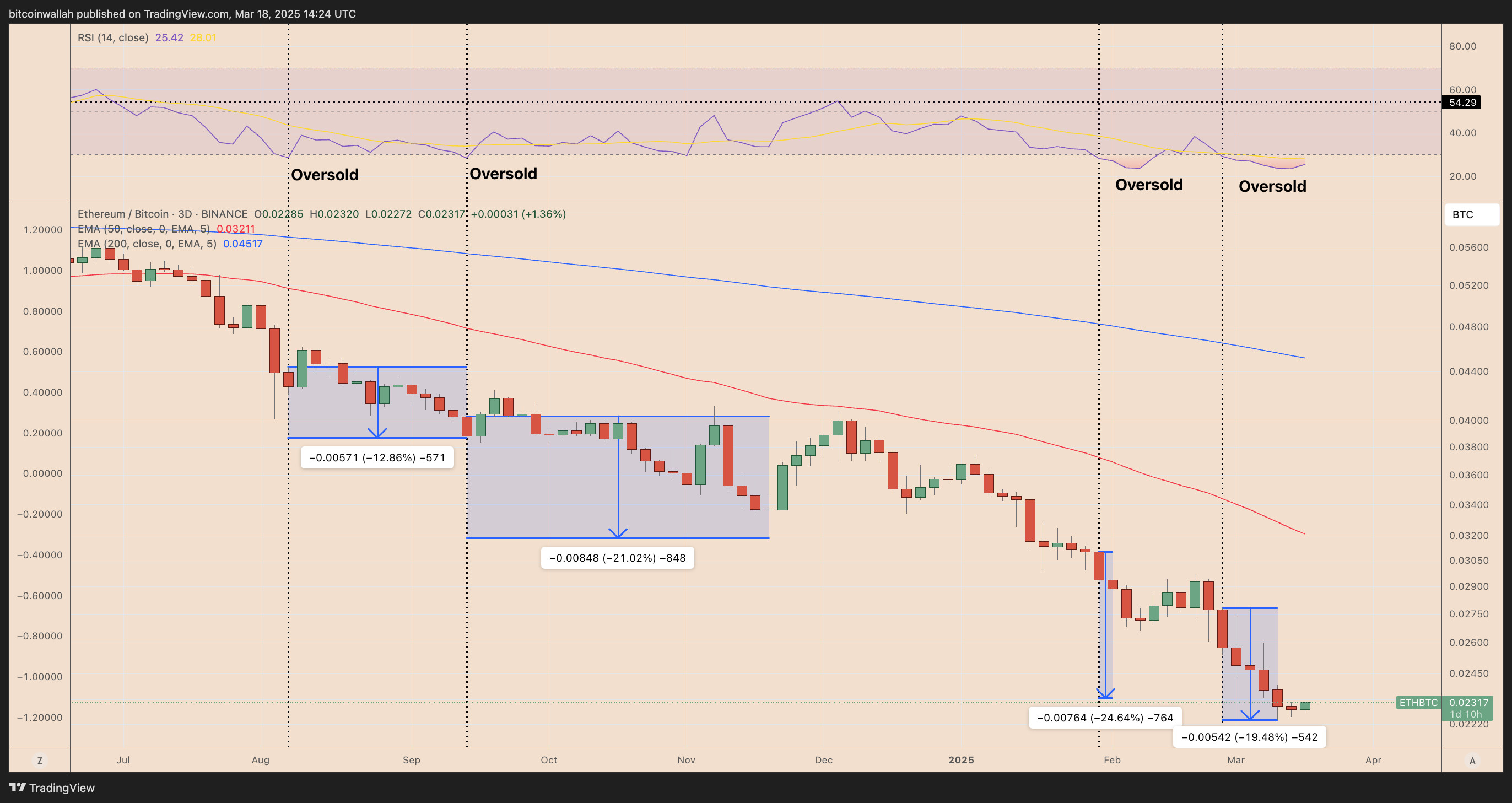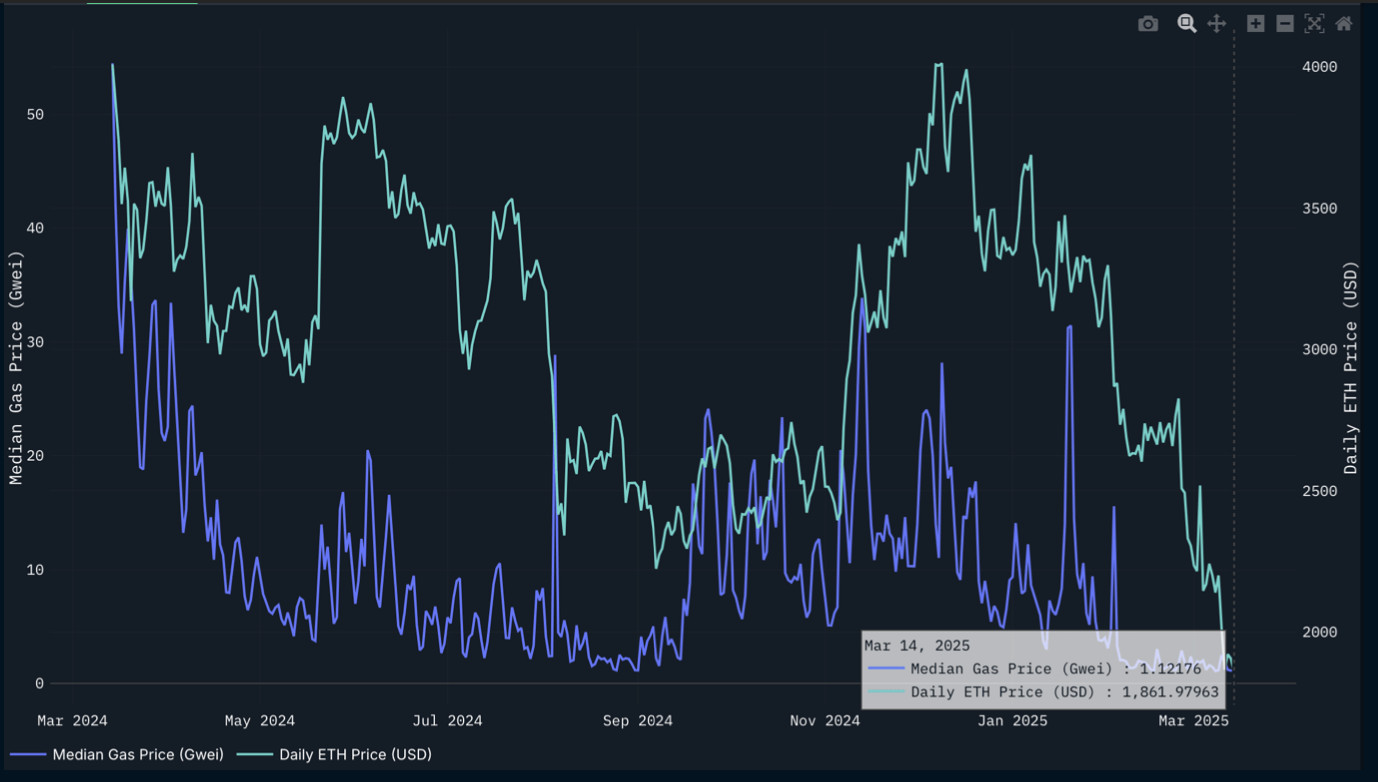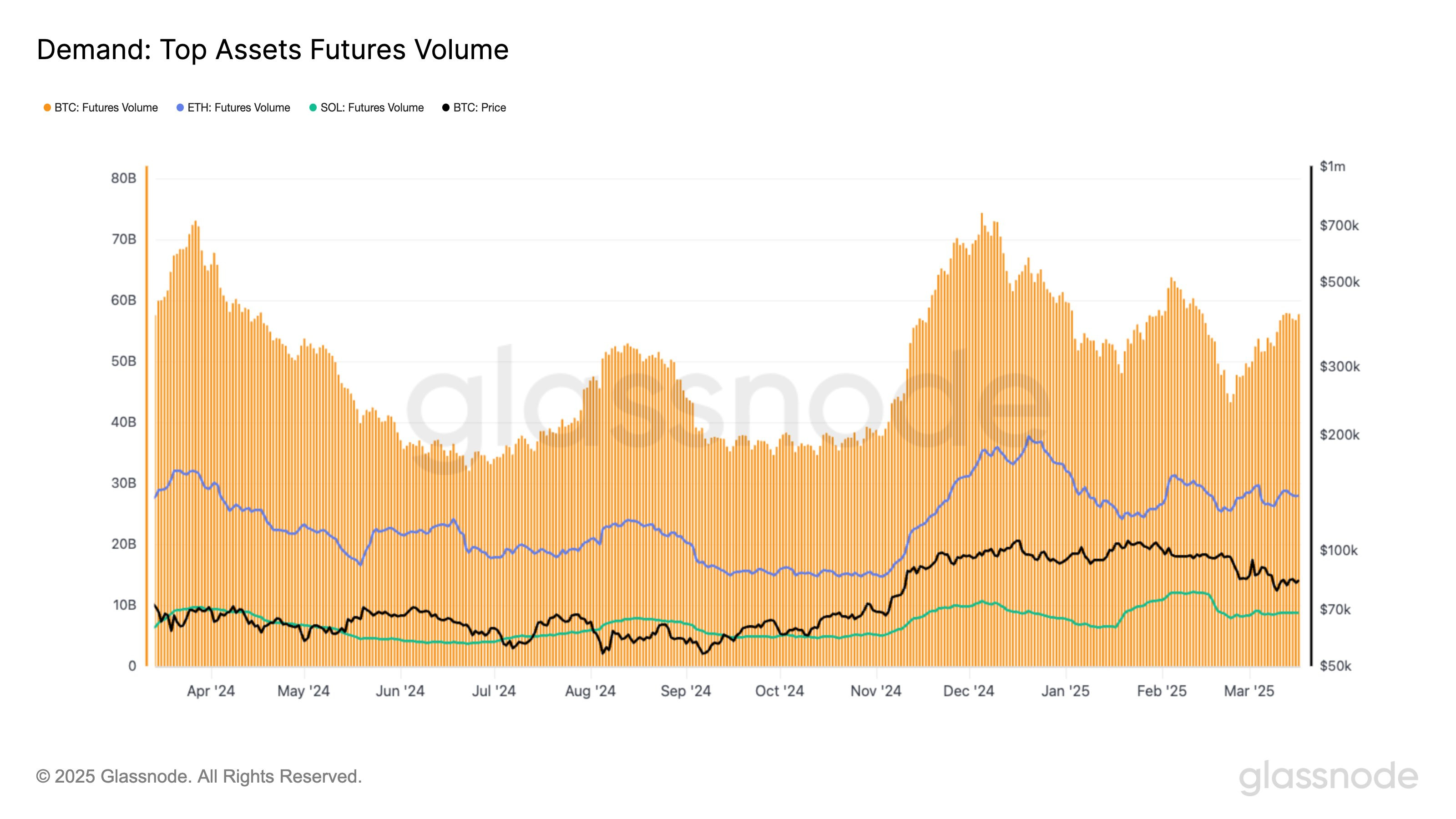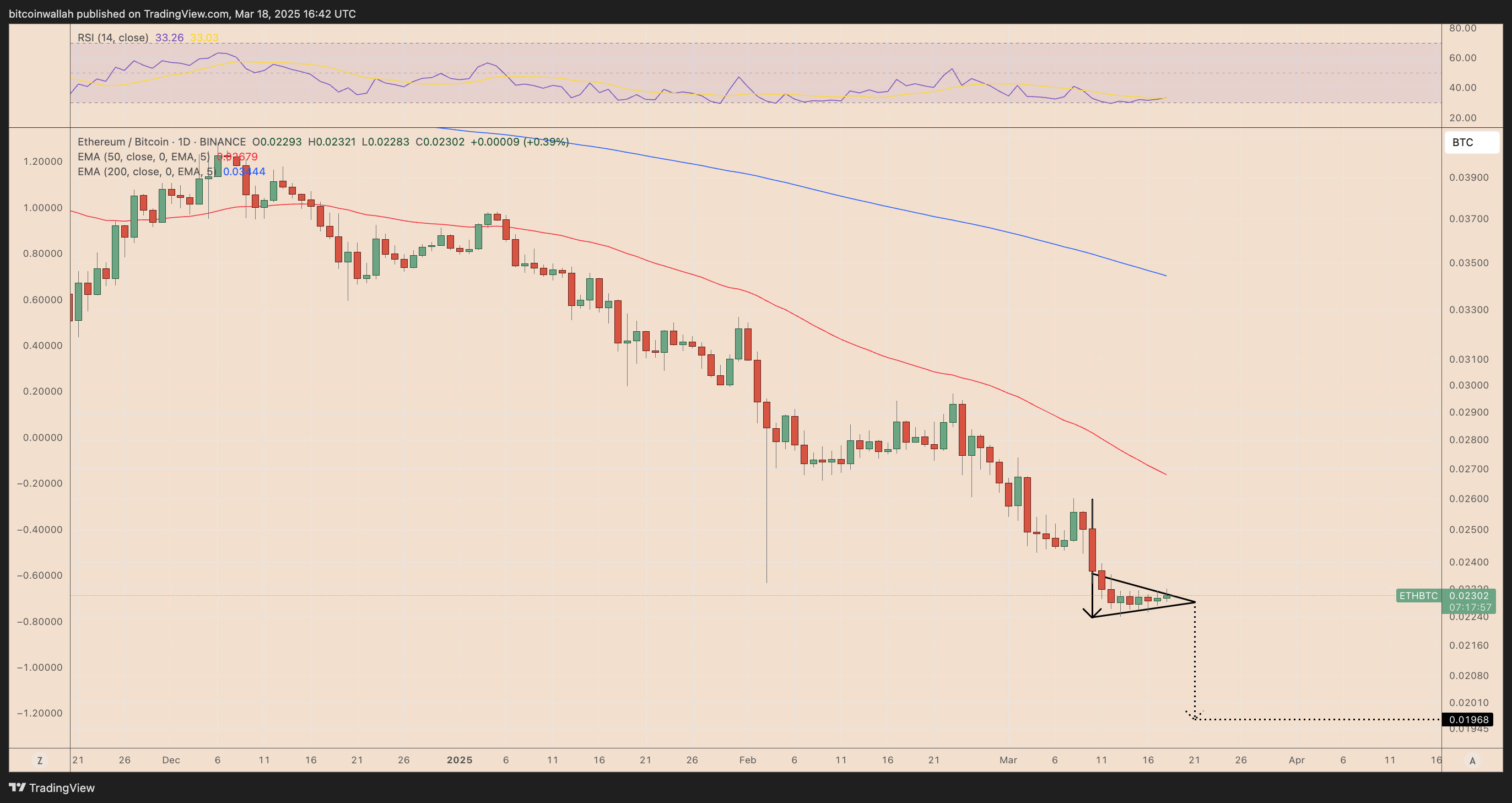Ethereum’s Struggles Against Bitcoin: A Deeper Dive

Ethereum (ETH) has been caught in a downward spiral against Bitcoin (BTC) for some time now, failing to establish a clear bottom despite multiple dips into oversold territory. With historical trends pointing to further declines and on-chain data showing weak demand, the outlook for ETH remains uncertain. But could there be light at the end of the tunnel? Let’s uncover what’s really happening.
A Repeating Pattern: More Declines on the Horizon?
ETH/BTC’s relative strength index (RSI) on the 3-day chart is hovering below 30, a point typically associated with potential rebounds. However, history tells a different story: previous oversold conditions haven’t sparked a sustained recovery—instead, each bounce has led to lower lows.
Since mid-2024, ETH has seen repeated breakdowns, each bringing losses of roughly 13%, 21%, 25%, and 19.5%. Adding to the bearish sentiment, both the 50-day and 200-day exponential moving averages (EMAs) are trending downward, reinforcing the lack of bullish strength.
Crypto analyst @CarpeNoctom shed light on ETH/BTC’s struggles, pointing out that the pair has yet to confirm a bullish divergence—a pattern where the price posts lower lows while RSI makes higher lows. Without this divergence, the downward momentum could persist.
 ETH/BTC price chart
ETH/BTC price chart
ETH/BTC three-day price chart. Source: TradingView
ETF Outflows & On-Chain Data Suggest Weak Demand
ETH’s poor performance is underscored by concerning market trends. The downtrend of ETH/BTC appears even more pronounced when compared to the wider crypto market, particularly amid steady outflows from U.S.-based spot ETH exchange-traded funds (ETFs).
Spot Ether ETF net flows slipped by 9.8% in March, shrinking to $2.54 billion. Meanwhile, spot Bitcoin ETFs saw a comparatively smaller decline of 2.35%, retaining a far weightier total of $35.74 billion in net inflows. This divergence signals that investor confidence in ETH is waning relative to BTC.
Adding fuel to the fire, Ethereum’s gas fees continue to plummet. As of March, daily median gas fees had dropped to just 1.12 GWEI—a staggering 50x lower than the previous year’s levels.
 Ethereum gas fees
Ethereum gas fees
Ethereum median gas fees vs. ETH price (in dollar terms). Source: Nansen
According to analytics firm Nansen, despite ETH’s price recovery in late 2024, blockchain activity never fully bounced back:
“Much of the activity has shifted to Solana and Layer 2s over 2024.”
This shift underscores a critical issue: Ethereum is facing stiff competition, with emerging blockchain networks drawing away users and transaction volume.
Additionally, Ethereum futures trading volume remains stagnant while Bitcoin has experienced a 32% rebound from its February lows, indicating that traders are far more eager to engage with BTC than ETH.
 Bitcoin, Ethereum, and Solana futures volume
Bitcoin, Ethereum, and Solana futures volume
Bitcoin, Ethereum, and Solana futures volume. Source: Glassnode
ETH/BTC Could See Another 15% Drop
The ETH/BTC pair is currently trapped inside a bear pennant, a technical pattern that often signals further declines. If this pattern holds true, ETH/BTC could fall another 15%, targeting a price level of ~0.01968 BTC.
 ETH/BTC price pattern
ETH/BTC price pattern
ETH/BTC daily price chart. Source: TradingView
With both the 50-day and 200-day EMAs sloping downward, the general trend remains bearish. However, a potential breakout above the pennant’s upper resistance could invalidate this bearish setup, offering ETH some relief.
⏳ Can ETH reverse the trend? The path forward largely depends on a resurgence in demand for Ethereum, whether through revived investor interest, institutional accumulation, or a shift in market sentiment. Until then, the ETH/BTC pair remains under pressure.
Final Thoughts
Ethereum’s struggle against Bitcoin isn’t just about price action—it’s about utility, adoption, and broader market appetite. Decreasing gas fees, shifting liquidity, and struggling ETF inflows suggest that Ethereum may continue facing headwinds in the near term.
Does this spell the end for ETH? Far from it. But right now, Bitcoin’s dominance remains undeniable. How Ethereum navigates its next chapter—whether through network scalability improvements, deeper institutional interest, or new technological breakthroughs—will determine its fate relative to BTC.
🔎 Keep an eye on:
- ETH reclaiming its 50-day EMA
- Increased futures trading volume
- A shift in gas fee trends or on-chain adoption
Until then, buckle up—Ethereum’s ride isn’t over yet. 🚀
Disclaimer: This article does not provide financial advice. Cryptocurrency investments are highly volatile, and readers should do their own research before making any financial decisions.

